The vast majority of these illustration plates are
from a plant systematics wall chart series - the
Dodel-Port Atlas - released between 1878 & 1883
Dodel-Port Atlas - released between 1878 & 1883
"Living nature is the best teacher and pedagogue; an artistic medium of representation tries to replace nature and this can be possible in practice only if the images are true to natural objects. [..]
We had in mind not only the needs of Hochschule, but also those of the Mittelschule. Pupils of different age mainly have been served badly in regard to schematic representations of all kinds, so that it is actually difficult for them to gain a correct underestanding of natural living things... Accordingly, the 'Anatomisch physiologische Atlas der Botanik' will be designed to be used at every level of botanical teaching and in every branch of botanical knowledge. [..]
Natural, scientifically reliable wall charts can replace a natural object in classroom teaching and in lectures; they are more enlightening than the spoken word." [Arnold and Carolina Dodel-Port, 1883]
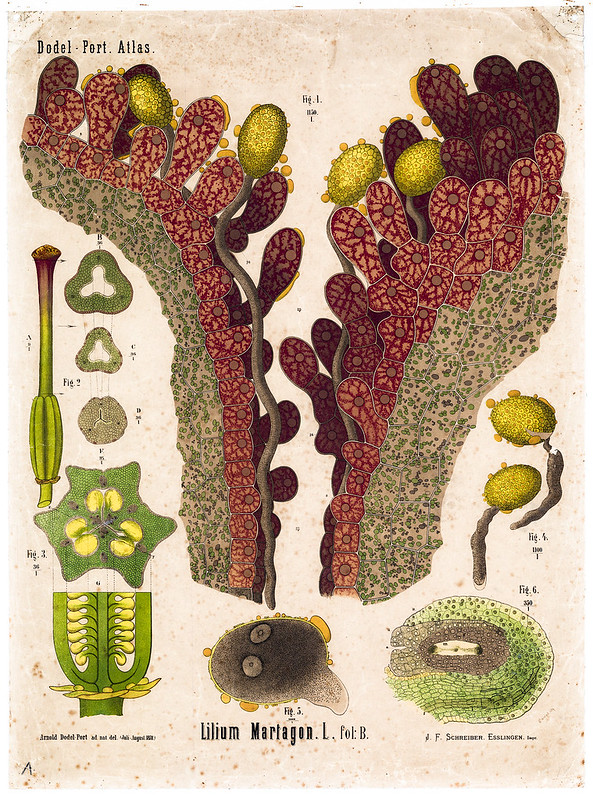
Stigma and pollen Tubes of Lilium martagon
Martagon or Turk's cap lily
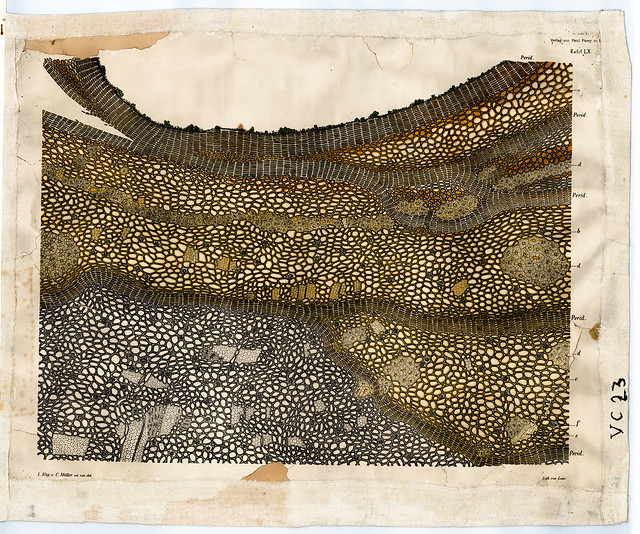
Cork
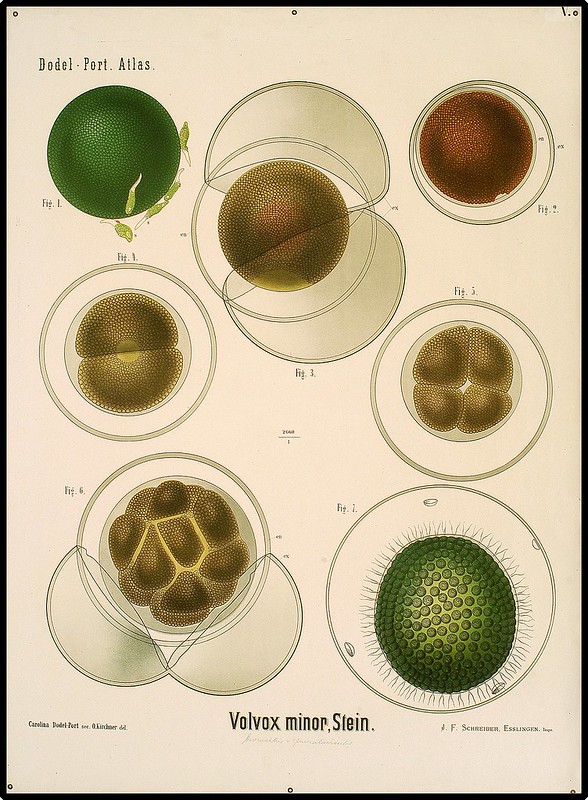
Volvox minor
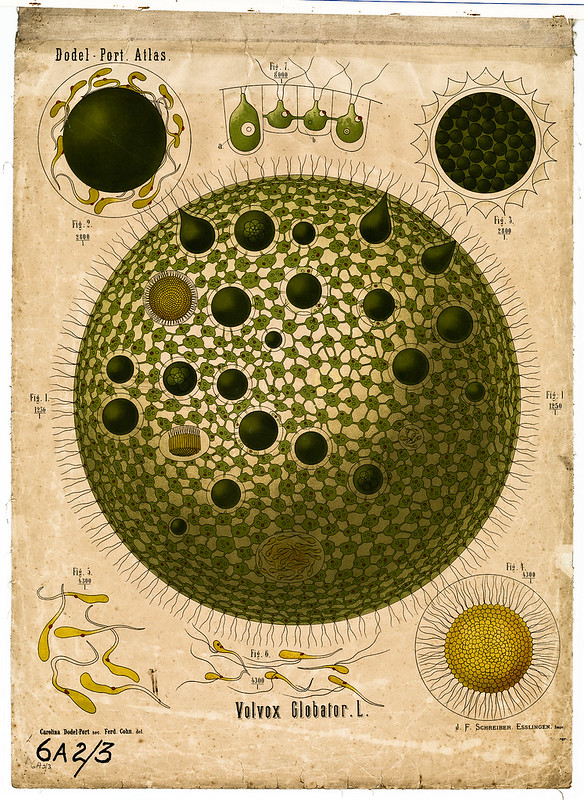
Volvox globator
"This shows the freshwater green alga Volvox globator. Many individual cells live together forming a beautiful spherical colony. Some of them are specialized for reproduction."^
Archegonia
The flask-shaped female organ in lower order plants (mosses for instance)^ containing the ovum or female gamete at its base. I presume this illustration series shows fertilisation occurring.
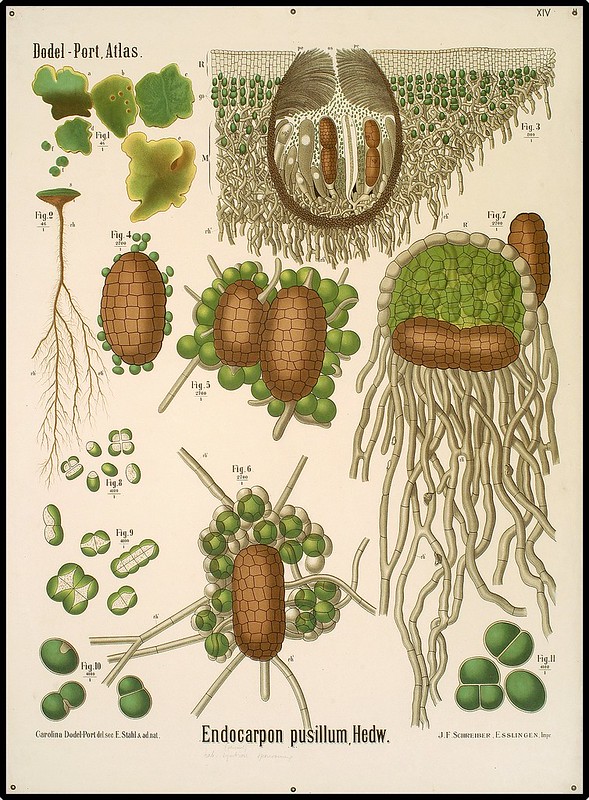
Endocarpon pusillum
(Hedwig lichen^)
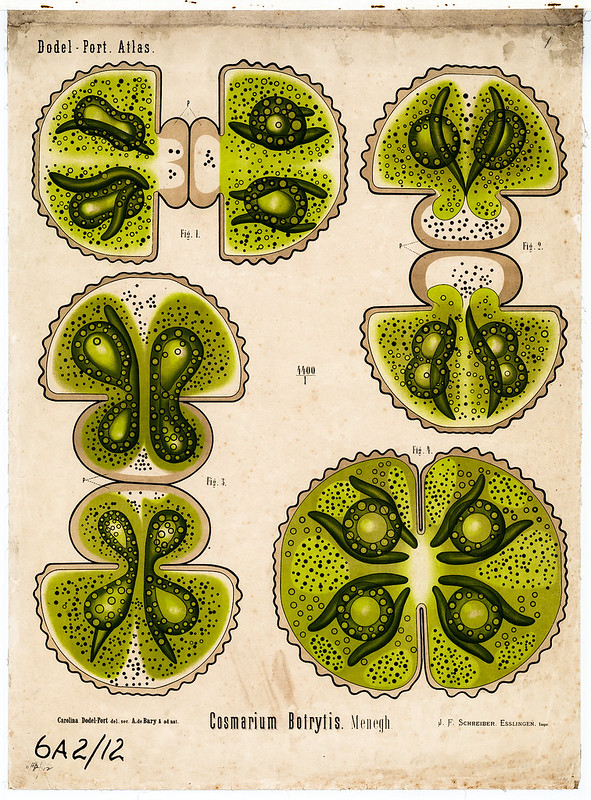
Cosmarium botrytis
(see: Algaebase)
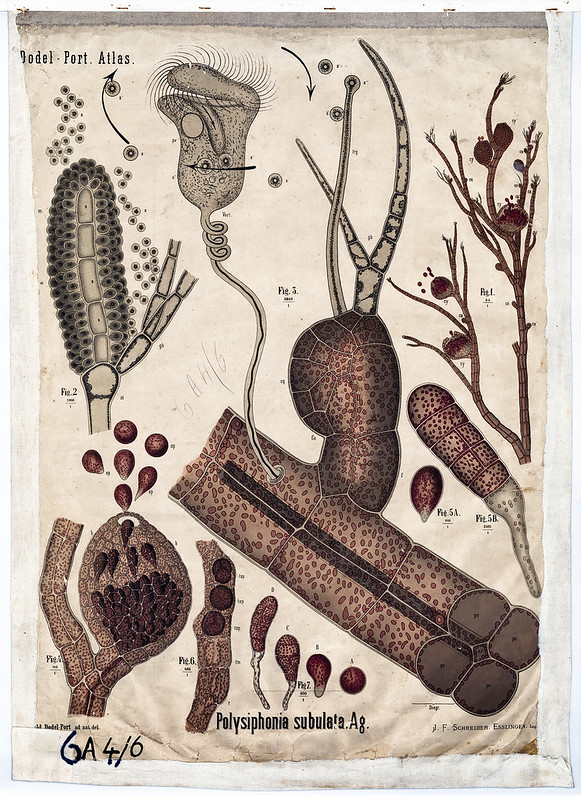
Polysiphonia subulata
(red algae genus^; species name is likely deprecated)
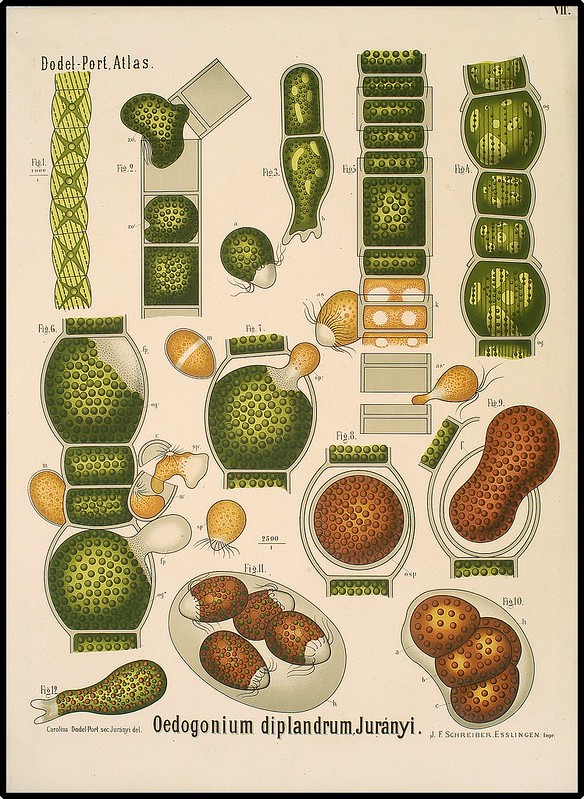
Oedogonium diplandrum
(near-microscopic filamentous algae [Algalweb])
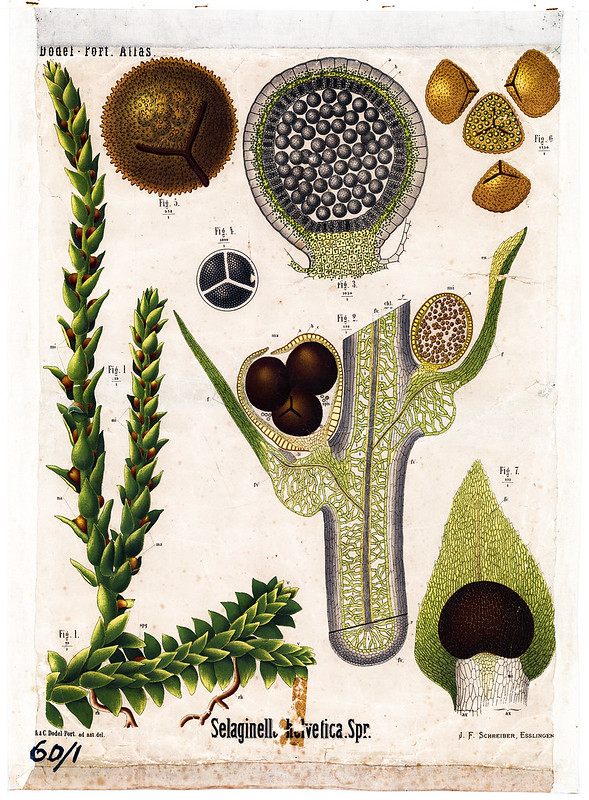
Selaginella helvetica
(after Pteridophyta before Gymnosperms
- spikemosses^)
- spikemosses^)

Prothallus (Gametophyte)
Aspidium species
(wood fern)
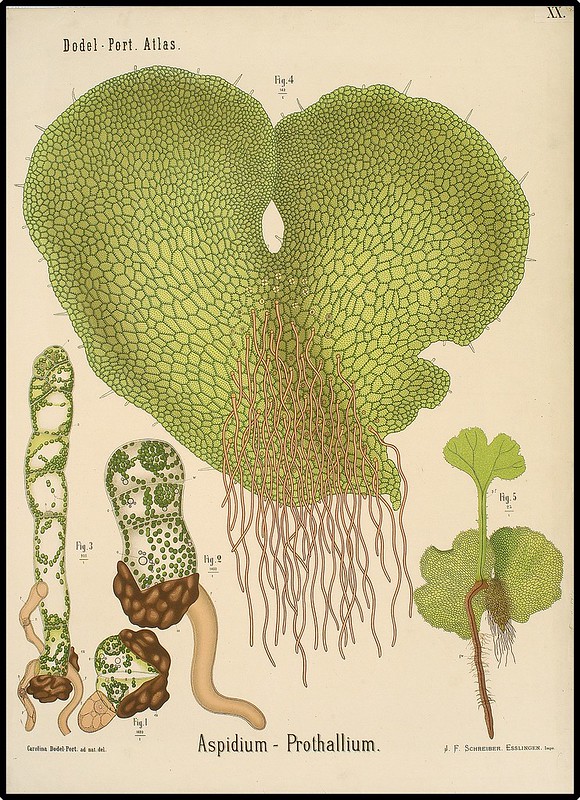
Prothallus (Gametophyte)
Aspidium species
(wood fern)
The Dodel-Ports' schematics were far superior as teaching aids versus a contemporary wall chart of the same species, immediately above. {The Dodel-Ports Atlas is noted as a very influential contemporary model for educational chart design}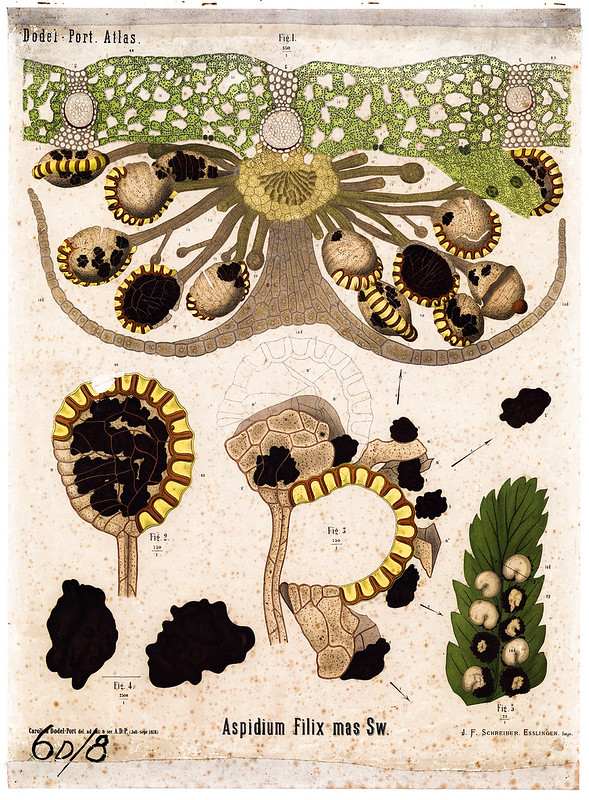
Aspidium filix Sporangia
(Wood fern^)
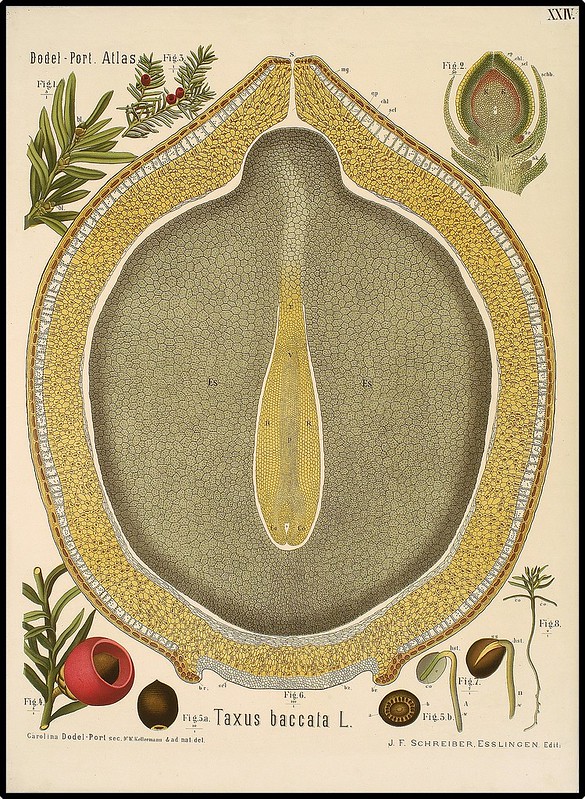
Taxus baccata
(common Yew tree^)
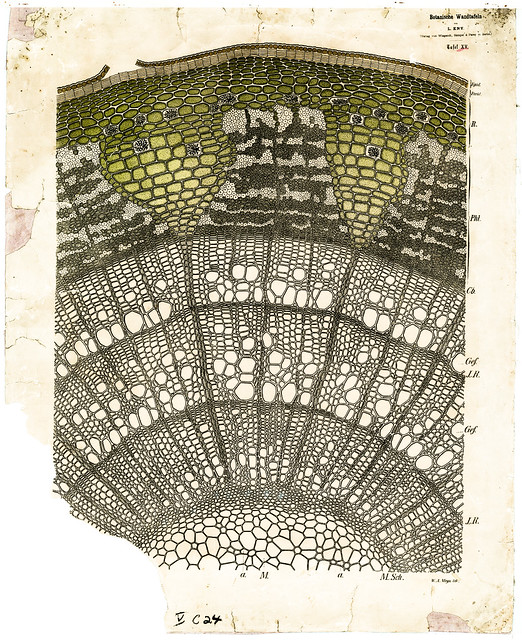
Stem Tillia sp.
(Probably Tilia cordata^ cross section)
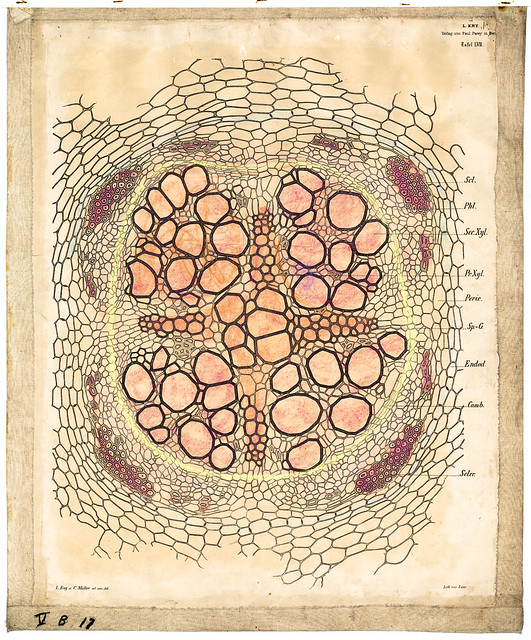
Root, transverse Section
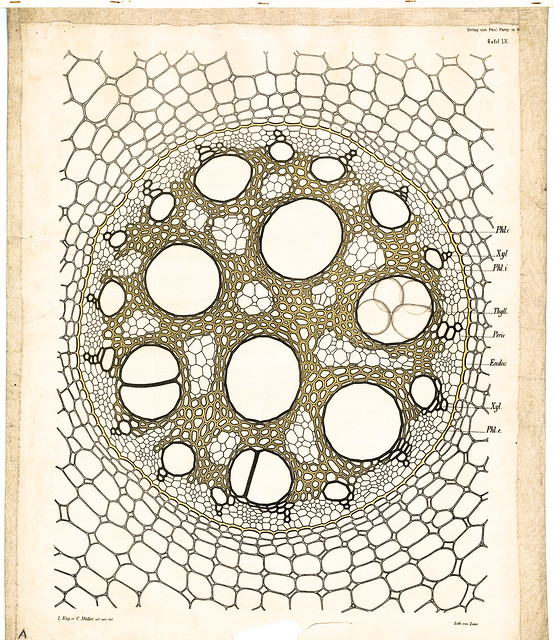
Monocot^ root
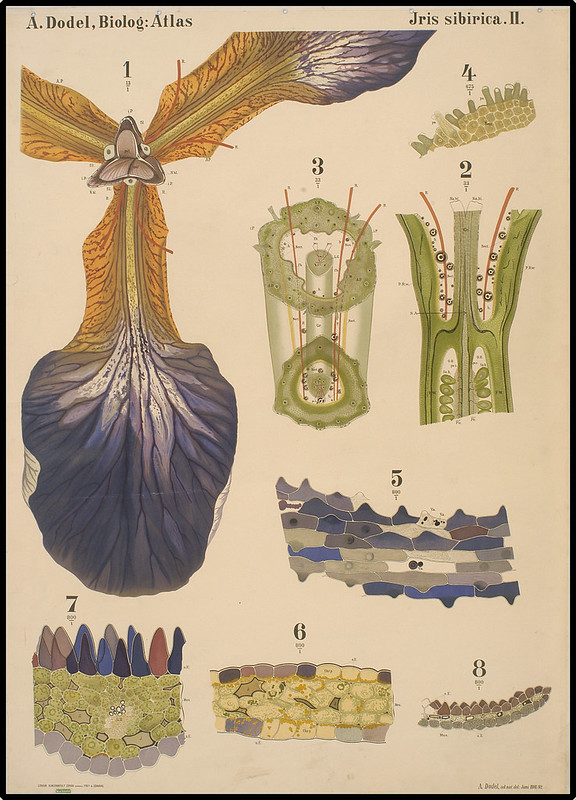
Iris sibirica
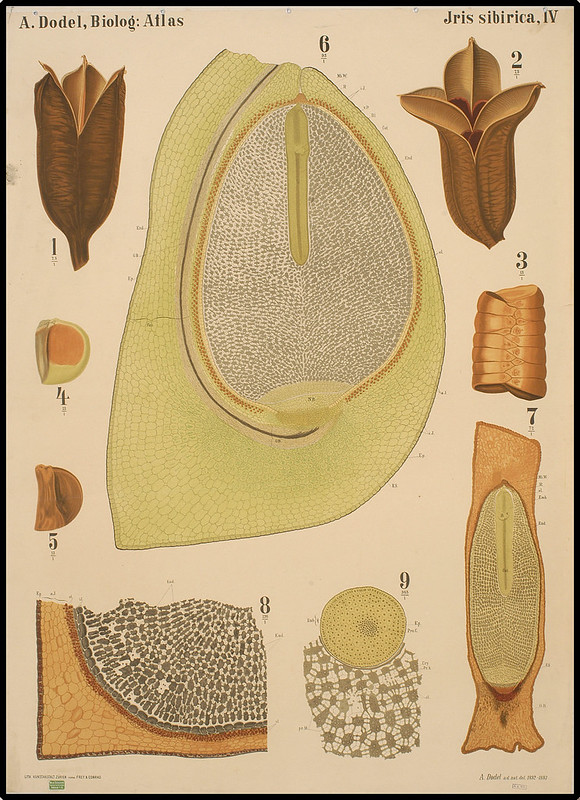
Iris sibirica
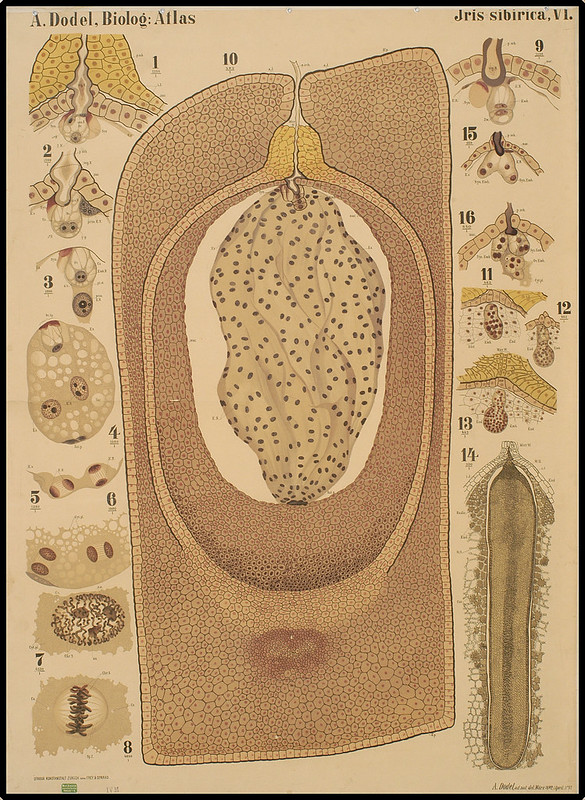
Iris sibirica^
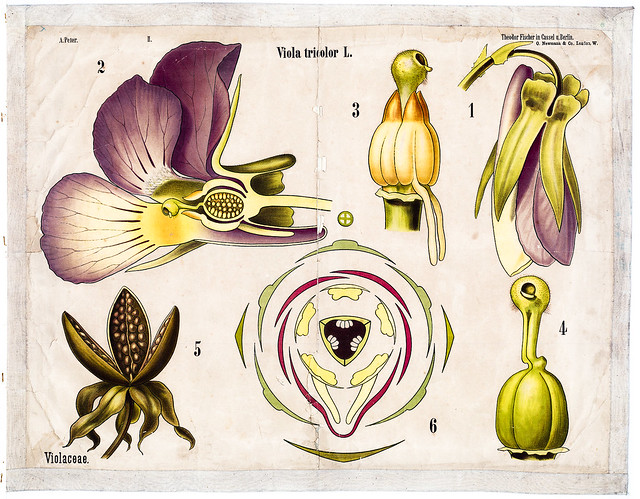
Flower – Violaceae (Viola tricolor^)
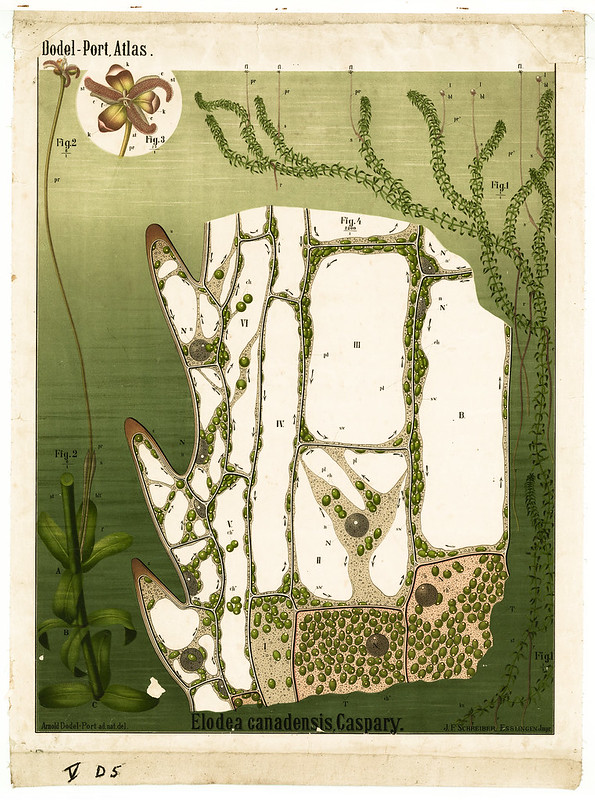
Elodea canadensis, Gaspary
(Canadian waterweed^)
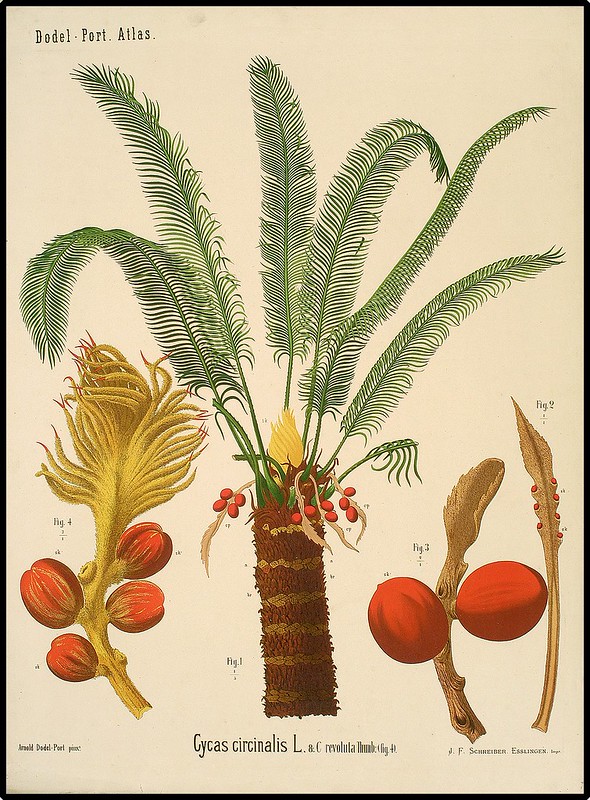
Cycas circinalis = Queen palm
Cycas revoluta = Japanese sago palm
Cycads are seed plants typically characterized by a stout and woody (ligneous) trunk with a crown of large, hard and stiff, evergreen leaves.Arnold Dodel (1843-1908) was a Swiss-German botanist who held professorships at Swiss universities where he studied plant reproduction and algal species and he founded a botanical microscopy laboratory at the University of Zurich.
Dodel was a prolific author of popular educational works on plants and an enthusiastic supporter of socialism. He was a regular correspondent with the eminent German biologist-artist, Ernst Haeckel, as well as Charles Darwin. Dodel was an early and vocal advocate for the Theory of Evolution (see).
Dodel married Carolina Port in 1875 and she contributed a large number of the illustrations to the series displayed above. He was subsequently known as Arnold Dodel-Port.
The Dodel-Port Atlas consists of 42 botanical teaching charts published from 1878 to 1893. Two sources were used for the images seen above. Complete sets of the lithographic plates appear to be rare.
- All 42 plates from the Dodel-Port Atlas are accessible via the European Library (these are the plates above with black borders) - the original works and digital files are owned by the National and Royal Library of The Netherlands.
- The balance (majority) of the illustrations above were sourced from the Historic Charts Collection at New Zealand's McGregor Museum (University of Auckland).
- Scotland's University of Dundee Museum scientific chart collections.
- In passing: a short review with photos from a U Dundee 'Plant Life' exhibition in 2009.
- Books by Dodel-Port : Googlebooks | Amazon | Worldcat.
- There is little in the way of background information easily available online about Dodel-Port but one significant recent book appears to place his contributions in context on the historical timeline of graphical teaching : 'Visual Cultures of Science: Rethinking Representational Practices in Knowledge Building and Science Communication', edited by Luc Pauwels, was published in 2005 and sounds impressive.
- Thanks variously to Will Schofield & Scientific Illustration.
- Previously: 19th Century Wall Charts -<>- Dutch Botanical Wall Charts -<>- Wageningen Wall Charts. [science | flora]



















7 comments :
“Nature does not hurry, yet everything is accomplished.”
― Lao Tzu
Oh thank you, BibliOdyssey! I am in awe of these magnificent prints. I am so happy the artists did not hurry, and created such beautiful, wonderful works.
Great quote, bowsprite. The colors in some of these charts glow contrasted with the attending black lines. Visually, an enticing mix of biomorphic patterns and a vintage botanical look.
I know these were supposed to be teaching material - but I think they're just beautiful!
Awesome. Wow. Thanks for posting these. It makes me ache to split myself and be half outdoors in a wood, and half in my studio, drawing.
thanks info
Cork is so beautiful!
And the Tillia looks like a Native American weaving.
(and I *love* DPL's comment)
These just slay me, thanks. It reveals a whole world that we are almost entirely unaware of.
Post a Comment
Comments are all moderated so don't waste your time spamming: they will never show up.
If you include ANY links that aren't pertinent to the blog post or discussion they will be deleted and a rash will break out in your underwear.
Also: please play the ball and not the person.
Note: only a member of this blog may post a comment.